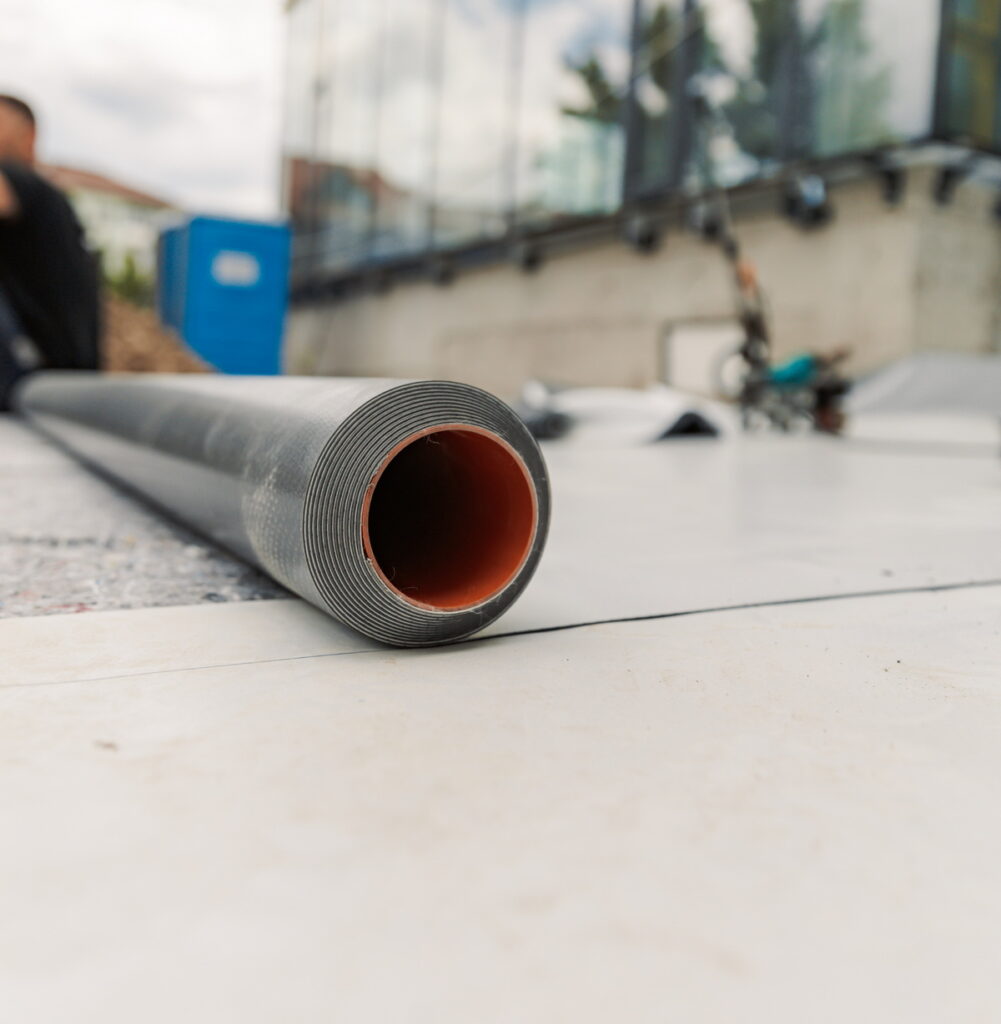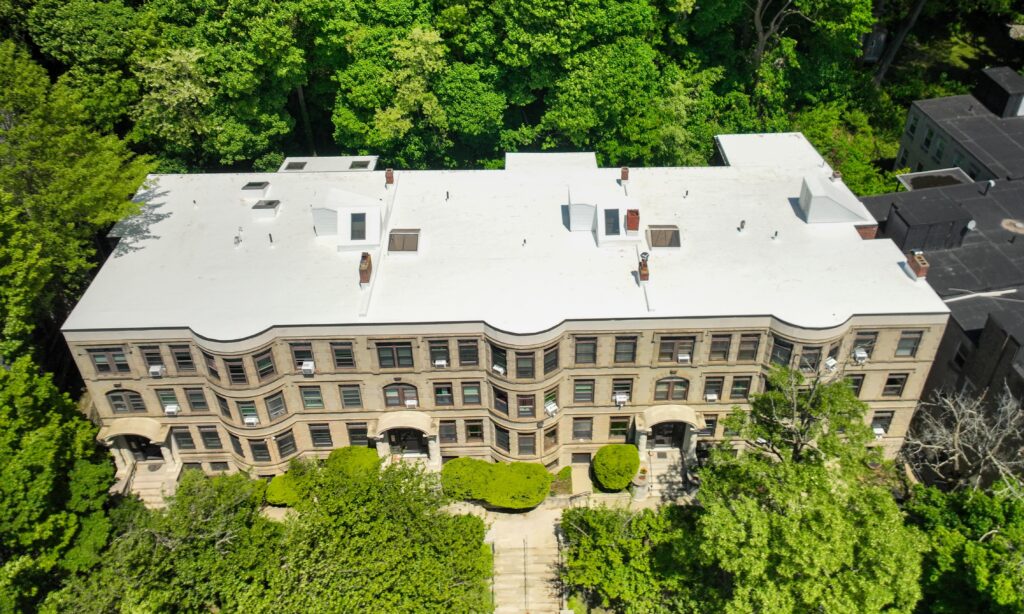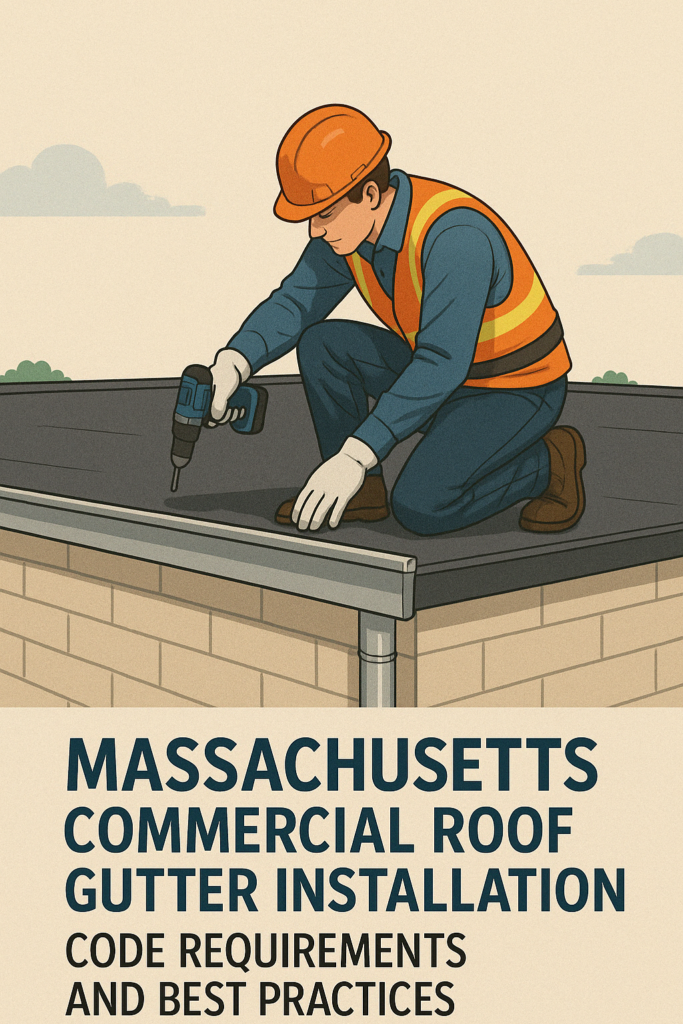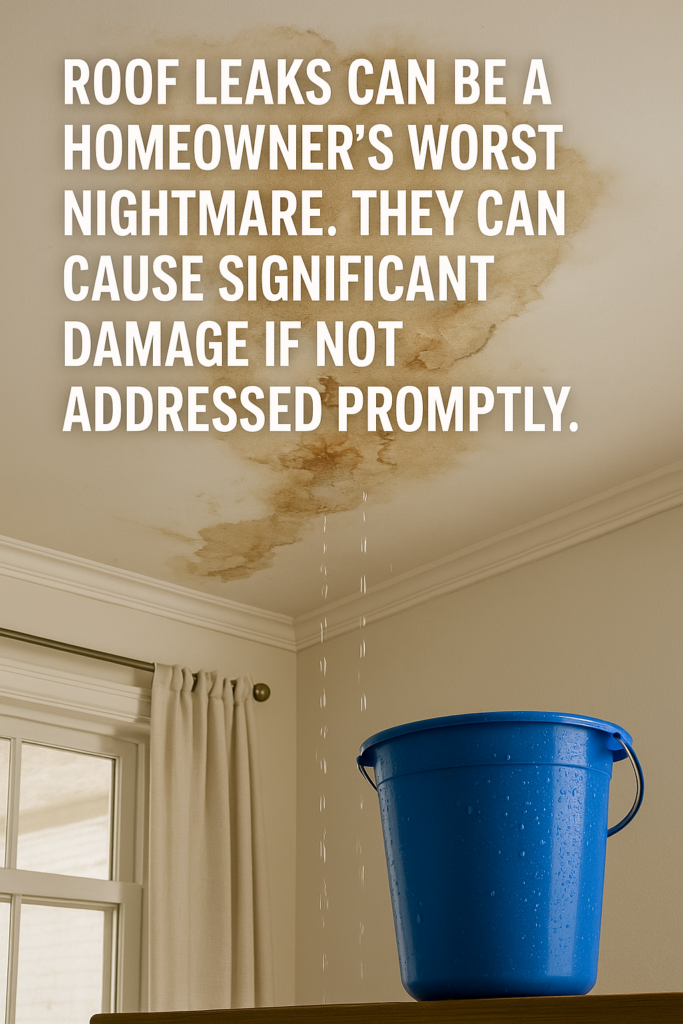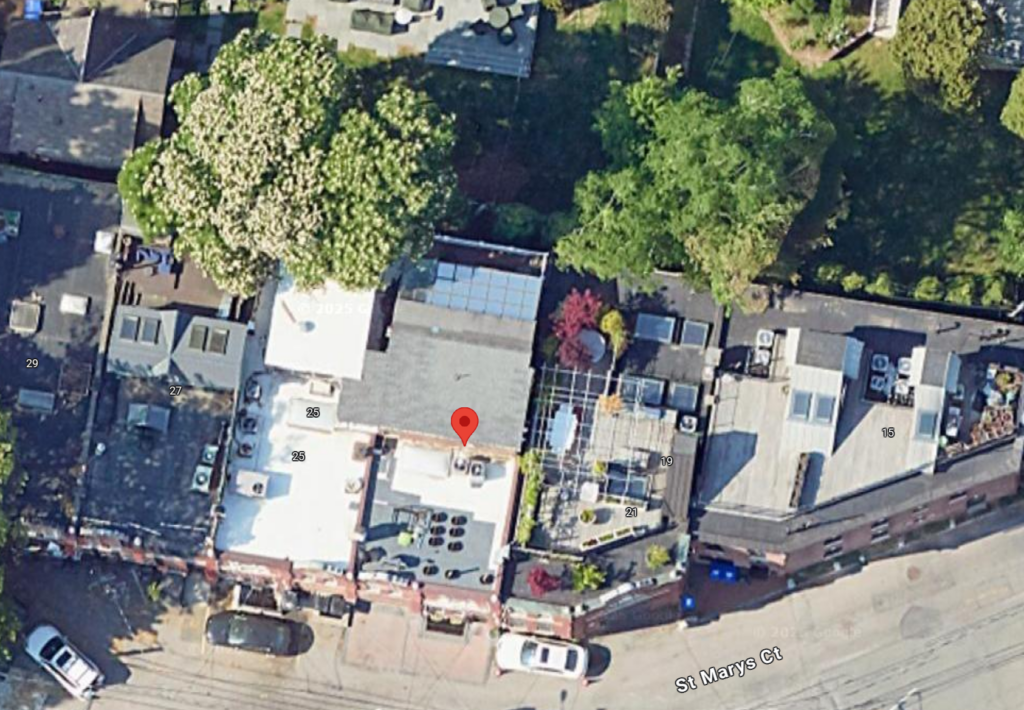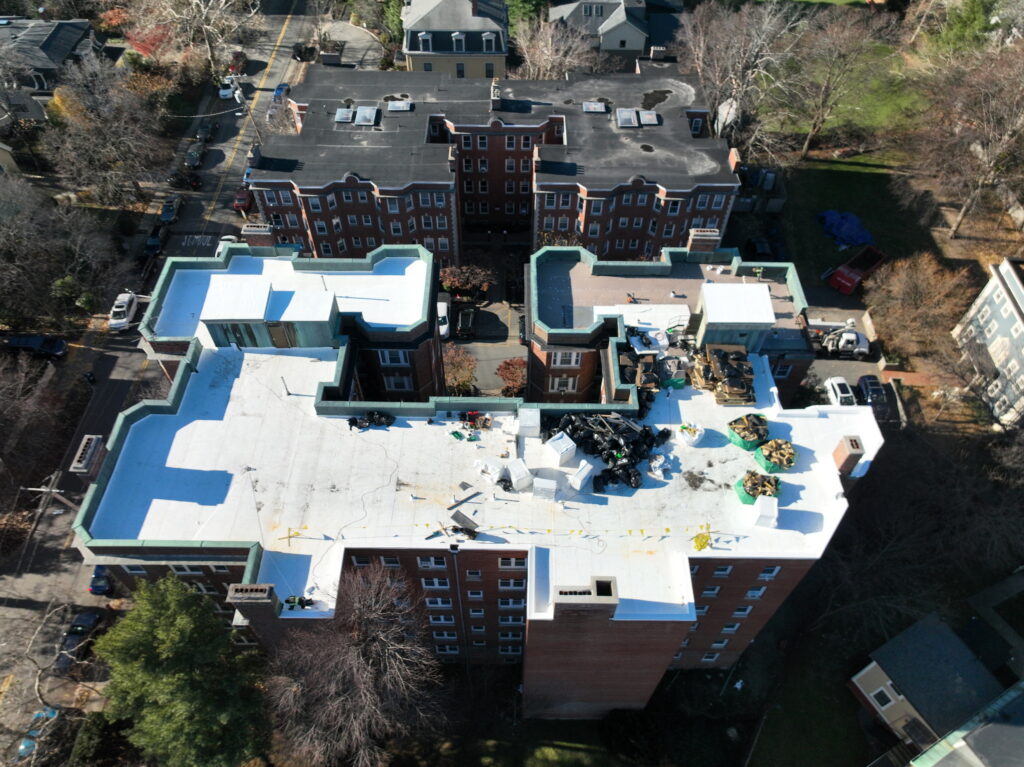Best Practices for Determining the Minimum Roof Pitch for Shingles
Reading Time: 8 minutesKnowing the minimum roof pitch when installing asphalt roof shingles is crucial for ensuring adequate water drainage and roof longevity. The minimum roof pitch for shingles, typically set by the International Building Code (IBC), is 2:12. The roof should rise 2 inches for every 12 inches of horizontal run. This article will guide you through the importance of this requirement, additional measures for low-slope roofs, and best practices for installation.

Minimum Roof Pitch for Shingles – Keys
- Understanding roof pitch is crucial for adequate water drainage and shingle performance. Asphalt shingles require a minimum pitch of 2:12.
- Adhering to the recommended roof pitch can help maintain warranties and enhance the longevity of your roofing system.
- For optimal performance, roofs should ideally have a pitch between 4:12 and 8:12, balancing drainage efficiency and installation ease.
- Roofs with a shallow slope, below the minimum standard of 2:12, face challenges such as inefficient water drainage and potential lateral water movement around shingles. These roofs may require additional considerations for water management and strict adherence to manufacturer guidelines.
Defining Roof Pitch
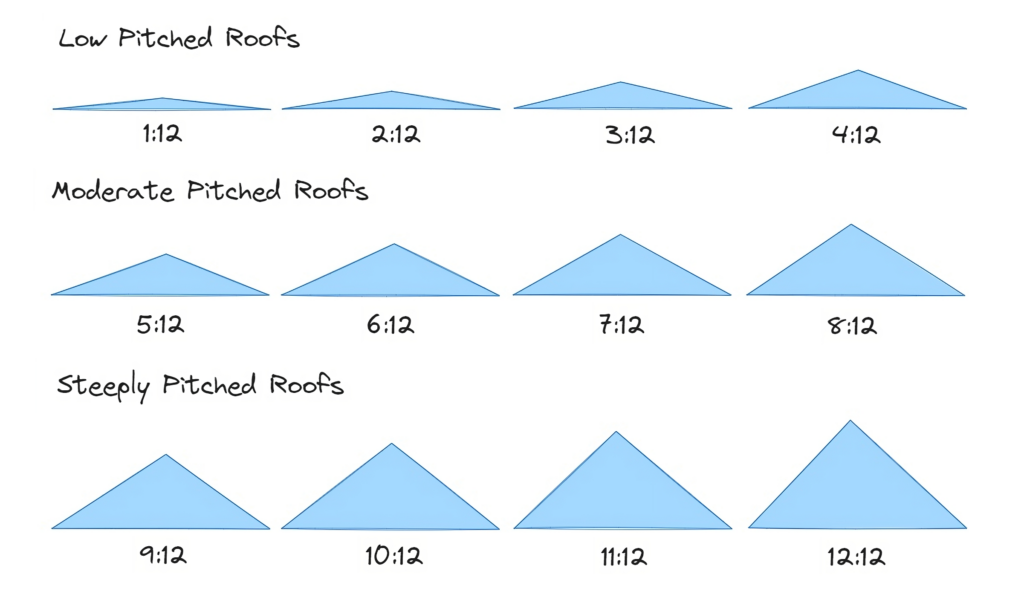
Roof pitch, also known as roof slope, refers to a roof’s steepness, defined by the ratio of vertical rise to horizontal run. It’s typically expressed in a rise-over-run ratio format, such as 4:12. For every 12 inches of horizontal distance, the roof rises by 4 inches. This ratio helps determine how your roof manages water drainage and weather elements.
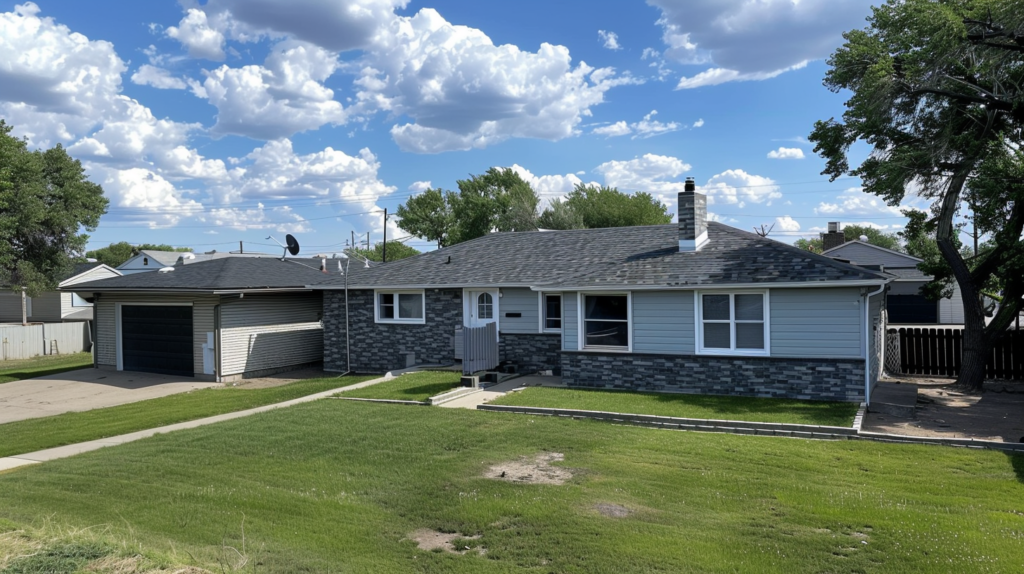
The difference in roof pitch can significantly affect the performance and aesthetics of your roofing system. A steeper roof sheds water more efficiently, reducing the risk of leaks and water damage. Conversely, a flatter roof can lead to water pooling, requiring additional waterproofing measures.
Your roof pitch affects the choice of roofing materials, installation techniques, and the roof’s overall durability. This is essential to installing new shingles or re-roofing an existing structure.
Flat roofs present unique challenges, particularly regarding water drainage and moisture resistance. Selecting appropriate materials for flat roof applications is crucial. Options like PVC, TPO, and EPDM membranes are often recommended due to their durability and effectiveness in handling the specific demands of flat roofing systems.
Stay updated with the latest roofing tips and industry news — follow us on Facebook for more expert insights and solutions!
Minimum Roof Pitch for Asphalt Shingles
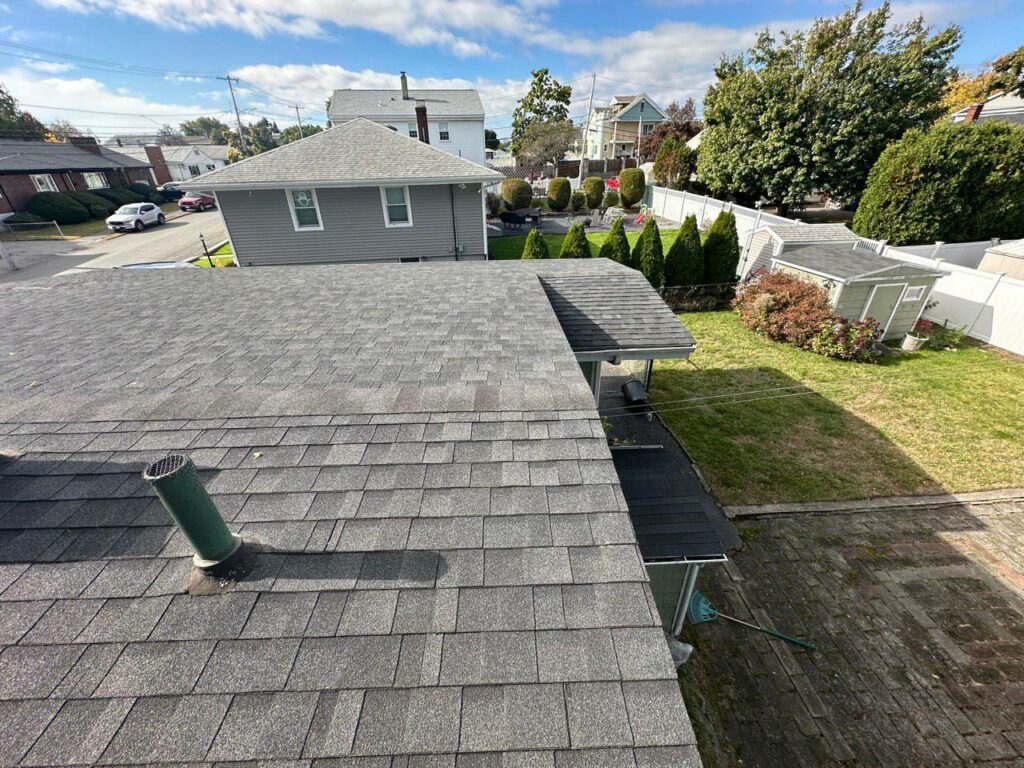
Regarding asphalt shingles, the minimum roof pitch is typically 2:12, meaning the roof rises 2 inches for every 12 inches of horizontal run. This standard is set by the International Building Code (IBC) to ensure adequate water drainage and minimize the risk of leaks. However, some local building codes and manufacturers might require a slightly steeper minimum pitch, often around 3:12, to validate warranties and ensure optimal performance.
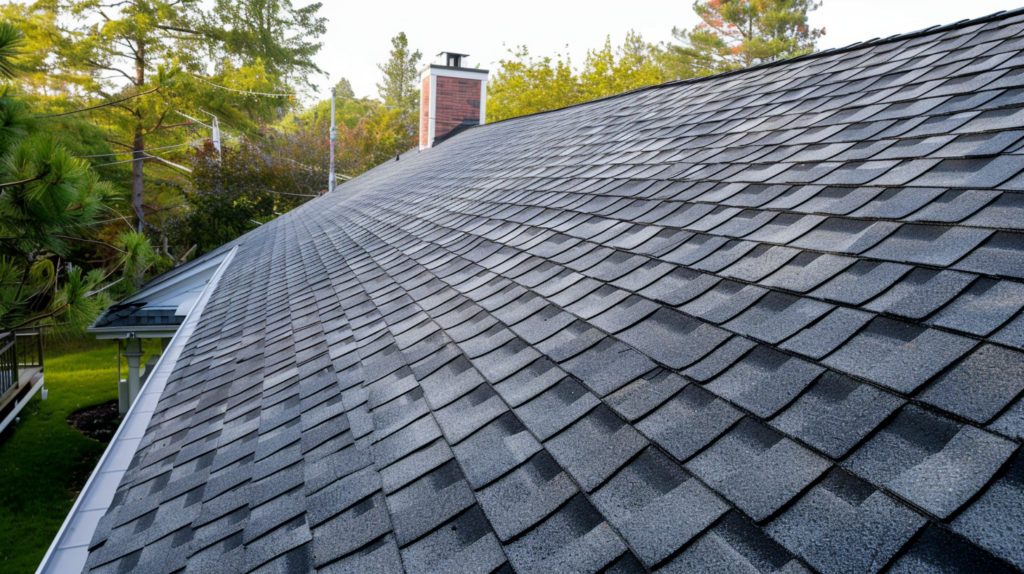
Installing asphalt shingles on roofs with a pitch lower than 2:12 is generally not recommended. The reason is simple: a flatter roof does not drain water as efficiently, leading to increased chances of water pooling and potential damage. For slopes between 2:12 and 4:12, additional measures like a double layer of underlayment are required to provide extra waterproofing.
The slope of your roof is critical to how well it sheds water, affecting its longevity and performance. Roofing professionals and manufacturers have set these minimum standards to ensure your roof remains durable and leak-free. Ignoring these guidelines can result in costly repairs and even a complete roof replacement.
Adhering to the required minimum slope for asphalt shingle installation safeguards your home against water damage and ensures the longevity of your roofing.
Learn More About PVC and Flat Roofing
PVC Roofing Membrane Complete Guide: Pros, Cons, and Tips
Fast Answers About PVC Roofing
Complete Roofing Guide: How Long Does PVC Roofing Last?
Why Roof Pitch Matters for Asphalt Shingles
Roof pitch influences roofing materials’ choice, installation, and overall performance. A proper roof pitch ensures efficient water drainage for asphalt shingles, reducing the risk of leaks and water damage. Gravity plays a crucial role here – the steeper the roof, the faster water drains off, making very low slopes risky for effective water management.
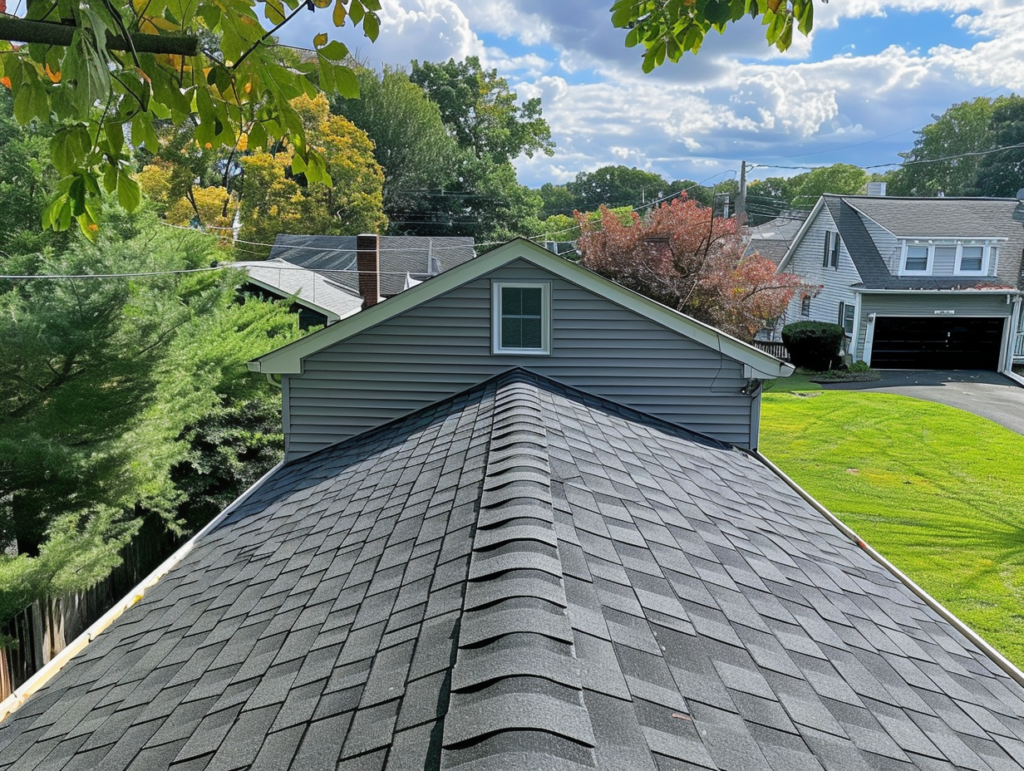
Most manufacturers will extend warranties for asphalt shingles down to a 2:12 pitch if proper installation methods, including additional underlayment layers, are applied. This shows the importance of adhering to the minimum pitch requirements to maintain the warranty and ensure the durability of your shingles.
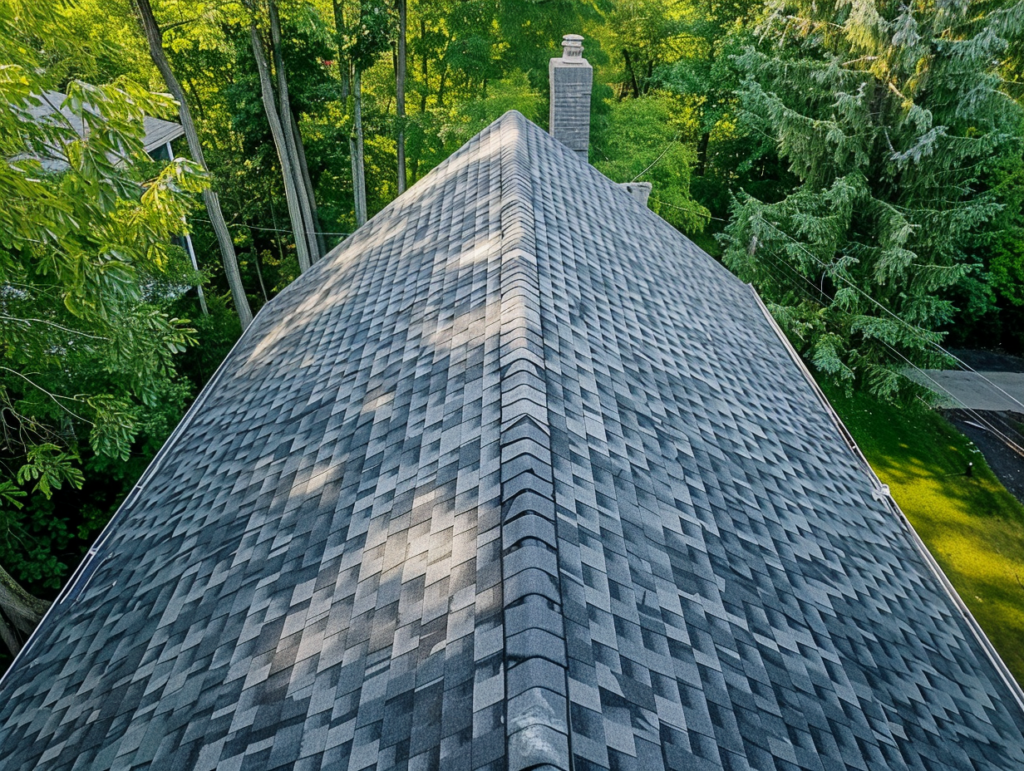
Understanding and implementing the correct roof pitch for asphalt shingles ensures that your roof performs optimally under various weather conditions, offering protection and peace of mind.
Optimal Roof Slopes for Asphalt Shingles

While the minimum pitch is essential, knowing the optimal roof slopes for asphalt shingles can enhance your roof’s performance. The best slope range for asphalt roofs is between 4:12 and 8:12. This range balances effective water drainage and ease of installation, making it ideal for most North American residential roofs.
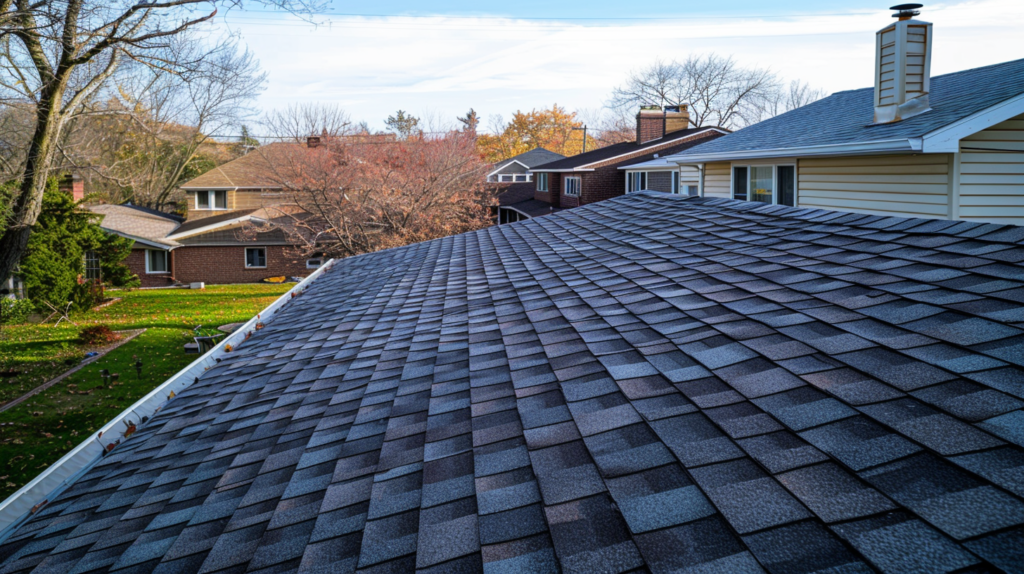
Roofs within this optimal range minimize snow accumulation, an advantage in colder climates. Architectural shingles, known for their enhanced design and performance, tend to fare better on steeper roofs, improving water runoff and overall durability.
The standard 4:12 roof pitch angle is approximately 18.43 degrees, providing just the right incline to ensure water and snow slide off efficiently without compromising the roof’s structural integrity.
Special Considerations for Low-Slope Roofs
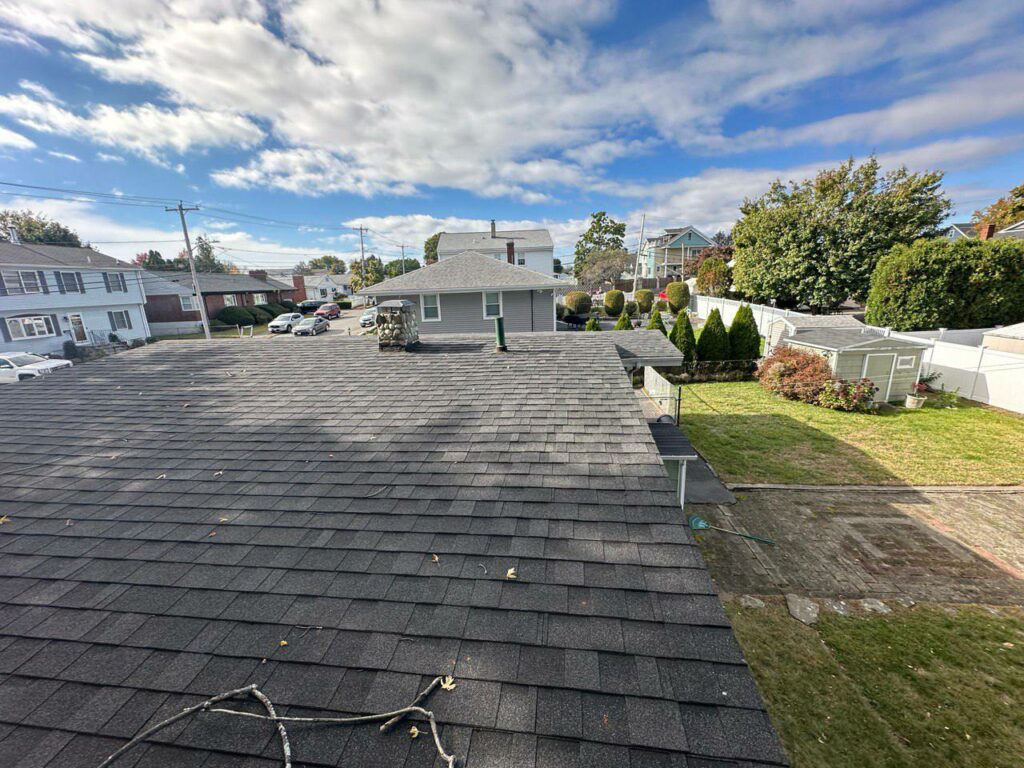
Low-slope roofs, while practical for specific architectural designs, come with their own set of challenges. For asphalt shingles on low-sloped roofs with slopes between 2:12 and 4:12, a double layer of underlayment is required to ensure adequate waterproofing. This underlayment must conform to specific ASTM standards to provide the necessary quality and durability.
The initial underlayment course for low-slope roofs should be doubled, followed by 36-inch wide strips applied in a shingle pattern, overlapping by at least 19 inches to ensure proper coverage. This meticulous approach helps prevent lateral water movement, a common issue with low-slope designs.
In colder climates, installing an ice and water shield at the eaves prevents ice dam formation, avoiding water backup and leaks. Applying underlayment and additional protective measures maintains the integrity and durability of low-slope roofs.
Alternatives to Asphalt Shingles for Flat Roofs
Flat roofs pose unique challenges that often make asphalt shingles unsuitable. Materials like PVC, EPDM, and TPO are excellent alternatives. PVC is a durable, single-ply membrane with heat-welded seams that significantly reduce the risk of leaks. EPDM membranes are also famous for flat roofs and are known for their flexibility, chemical resistance, and weather durability.
TPO roofing, frequently used in commercial buildings, is installed in rolls welded at the seams, providing robust protection against leaks. The cost of these materials varies, with EPDM ranging between $4 and $8 per square foot and PVC between $5.50 and $9.50 per square foot.
For those looking for environmentally friendly options, PVC and TPO are recyclable and safe for the environment, making them excellent choices for modern flat roofs.
Installation Tips for Asphalt Shingle Roofs

Correct installation of asphalt shingles ensures the longevity and performance of your roof. Start with a smooth, well-fastened roof deck to ensure the final installation appears neat and performs effectively. Using starter strips at the eaves improves water-shedding capability and helps correctly align the first course of shingles.
Proper overhang is essential for protecting the underlying structure from the elements. Additionally, areas where shingles meet vertical structures like chimneys and plumbing vents must have additional flashing to prevent leaks. Ridge cap shingles are also vital for covering the roof peak, allowing water to shed down both slopes.
Avoid common mistakes, such as improper nailing and racking architectural shingles, which can affect the aesthetics and performance of your roof.
How to Measure Your Roof Pitch
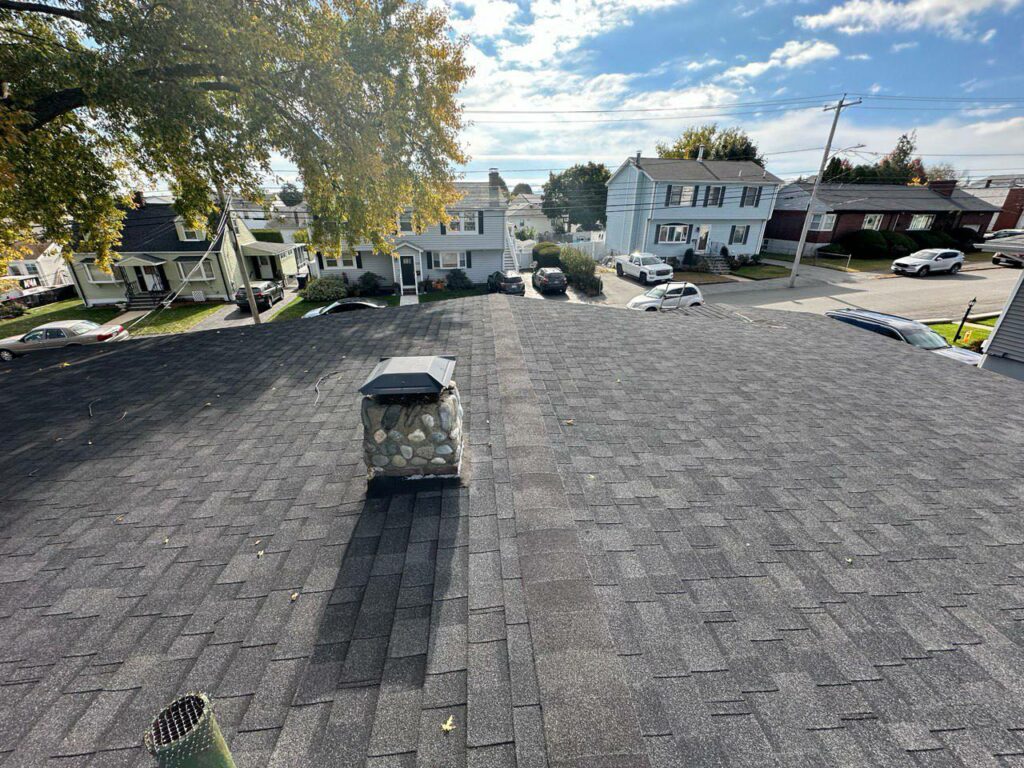
Measuring your roof pitch accurately is the first step to ensuring a successful roofing project. Homeowners can use tape measures, smartphone applications, and pitch estimator cards. For instance, the Measure app on iPhone and iPad allows you to take precise measurements by placing a dot over points of interest.

The Measure app can speed up the process and improve precision for enhanced accuracy, especially if your device has a LiDAR scanner. Guidelines in the app help align measurements with straight edges, making it easier to determine the exact pitch of your roof.

Taking multiple measurements builds a comprehensive record, which is invaluable for planning your roofing project.
Common Mistakes in Shingle Installation
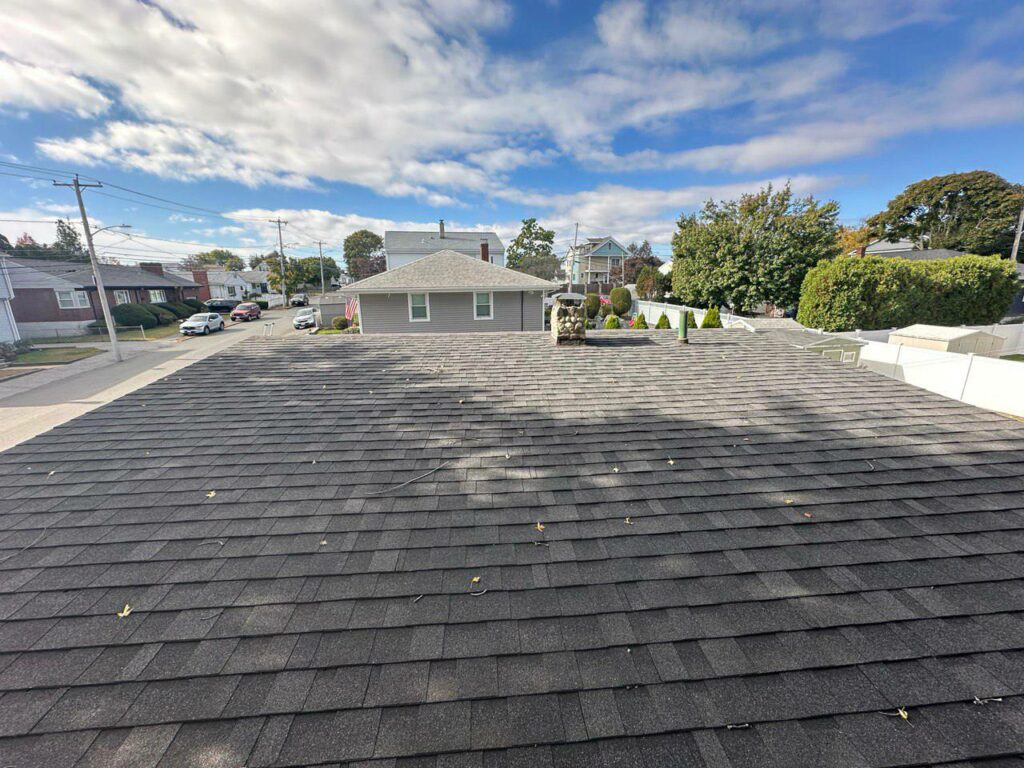
Incorrect roof pitch leads to premature shingle failure, causing costly repairs and replacements. One frequent error is placing nails incorrectly, which can compromise the roof’s integrity and lead to leakage issues.
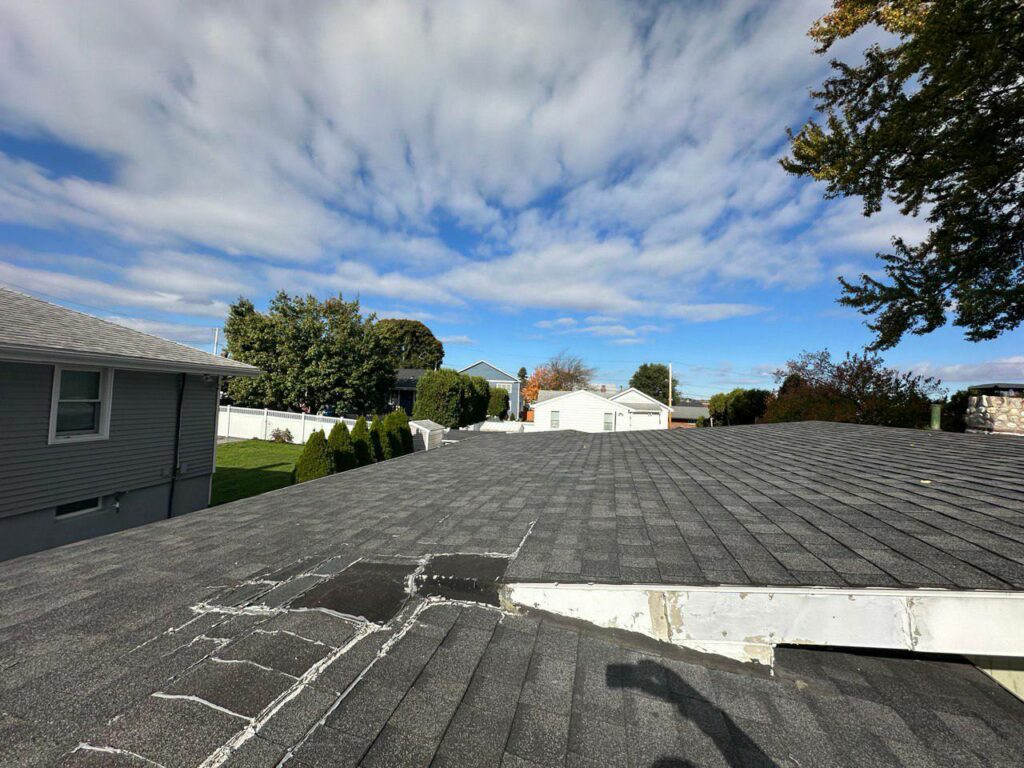
Follow manufacturer guidelines and ensure your roof pitch meets recommended standards to avoid these common mistakes.
Building Codes and Manufacturer Guidelines
Following building codes and manufacturer guidelines ensures a successful roofing project. The IBC mandates that shingles be applied according to both the standards set in the code and the manufacturer’s installation instructions. This compliance ensures your roofing materials’ safety, longevity, and warranty validation.
Many manufacturers require specific roof pitches to validate warranties, linking the pitch directly to the lifespan and effectiveness of the shingles. Following these guidelines protects your investment and ensures your roof performs optimally under various conditions.
Final Thoughts on Roof Slopes: Ensuring Proper Pitch for Long-Lasting Protection
Understanding the minimum roof pitch for shingles and adhering to installation guidelines is crucial for a durable, leak-free roof. From defining roof pitch to exploring optimal slopes and alternative materials, this guide provides a comprehensive overview to help you make informed decisions. Follow these best practices and guidelines to ensure your roofing project succeeds.
Explore More Articles on Roofing Services by ID Flat Roof
Massachusetts Commercial Roof Gutter Installation: Code Requirements and Best Practices
Finding Reliable Roof Leak Repair Services
High-Quality PVC Roof Installation at 23 St Marys Ct, Brookline, MA
Understanding Hail Damage: Causes and Solutions
Comprehensive Roofing Renovation at 7 Craigie Circle, Cambridge, MA
Efficient White PVC Roof Installation at 54 Solaris Rd, Hyde Park, MA
Frequently Asked Questions
Absolutely! The minimum roof pitch for asphalt shingles is 2:12, essential for proper water drainage and durability. Make sure to keep your roof in top shape!
Roof pitch is crucial for asphalt shingles because it significantly impacts water drainage and durability! A proper pitch ensures efficient runoff, ultimately reducing the risk of leaks and keeping your roof in top shape!
The best roof slopes for asphalt shingles are between 4:12 and 8:12! This range ensures great water drainage and makes installation a breeze!
PVC, EPDM, and TPO membranes are fantastic alternatives to asphalt shingles for flat roofs. They provide outstanding durability and leak resistance, and you’ll love the peace of mind they bring!
Measuring your roof pitch accurately is super easy! Just grab a tape measure or try a handy smartphone app like the Measure app, and you’ll have your pitch in no time!
Denis is the driving force behind ID Flat Roof, a leading company in Boston specializing in flat roof repair and installation for over 20 years.
Expertise:
Denis excels in PVC, TPO, EPDM, and rubber roofing. His meticulous approach ensures quality and customer satisfaction.
Innovation:
Denis incorporates cutting-edge solutions like skylights and solar PV roofing.




